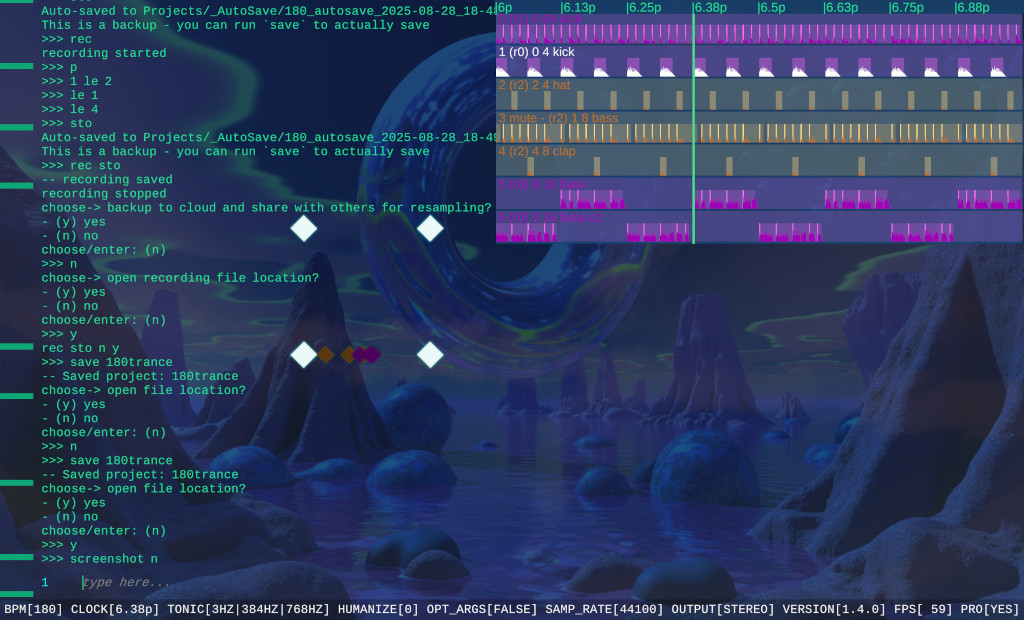- Published on
Amen Break Deconstructed: 50 Years of Jungle Evolution
- Authors

- Name
- Joshua Jones
Amen Break Deconstructed: 50 Years of Jungle Evolution
 Beat DJ Screenshot
Beat DJ ScreenshotThe Origin & DNA
The Amen Break is a roughly 6-7 second drum solo performed by Gregory Coleman in 1969 on "Amen, Brother" by The Winstons. Though short, it embodies a delicate complexity: the ghost-notes, the swung snare hits, the slightly loose fills, the cymbals ring — it's human, live, imperfect. What made it perfect for sampling was both its rhythmic richness and its raw recording texture.
From the 1980s into the early 1990s, hip hop producers began sampling the Amen Break and in the UK, as rave culture and breakbeat hardcore grew, it became one of the foundational building blocks for jungle. Producers chopped it into micro-segments, sped it up, layered it with deep bass, reggae and dub influences, added effects, filters, reverb, to create wildly syncopated, aggressive rhythms.
Even after five decades, the Amen Break continues to be used because of its iconic rhythmic energy and swing. It has that crack of snare, the push and pull, the micro-dynamics, which no programmed drum machine easily matches. For many listeners, that break has become a visceral cue, it signals the dancefloor, the peak moment, the breakdown or the rebuild.
The Amen Break can be mangled: time-stretched, sliced, reversed, chopped, reassembled. It can work in jungle, drum & bass, breakbeat hardcore, or in more left-field settings and every new wave of producers comes in with fresh ears and tools, reworking classics to sound modern but rooted.
The Amen as Blueprint for Sample Culture
What makes the Amen Break more than just a loop is how it became a blueprint for manipulating sound itself. Early jungle pioneers like Goldie, 4hero, and LTJ Bukem didn't just speed it up, they sliced it into fragments, rearranged snares, shifted kicks out of time, and layered it with atmospherics. Each cut became a new rhythmic vocabulary. Instead of drummers setting the beat, samplers did, and the DJ or producer became a kind of live percussionist.
This spirit of sonic surgery set the tone for sample-based culture in general. Hip hop producers were chopping funk breaks; jungle took it further by pushing tempo past 160 BPM and fracturing rhythm into controlled chaos. The Amen Break wasn't just reused; it was reinvented thousands of times. That's why even now, it feels both familiar and unpredictable: the skeleton is the same, but no two versions are alike.
Modern artists continue this lineage by treating breaks as living clay. Each generation brings new hardware, software, and creative intent, but the act is the same: take the Amen, pull it apart, rebuild it, and let dancers feel both the history and the shock of the new.
Recent Revivals & Examples (2025+)
To show the Amen Break's presence today:
Nia Archives' debut Silence Is Loud (released 2024/2025) mixes revivalism and pop form. On tracks like "Forbidden Feelingz", she uses samples, sound-system toasting, and rearranged Amen Break chops to evoke classic jungle energy but in a modern package.
Sherelle's WITH A VENGEANCE (2025) also leans on breakneck production, tempo shifts, rhythmic intensity, drawing on jungle and DnB traditions, though not always literally the original Amen, the spirit of breakbeat goes through.
In the underground / DJ culture, events like Rupture (a party collective) are known explicitly for "amen-nights," where DJs and crowds expect those jaws to drop when the Amen hits. It's become not just a drum signal but a festival moment.
How Soniare / Beat DJ Lets DJs Chop & Remix Breaks in Real Time
This is where tools meet tradition. Soniare's Beat DJ is a sample-based live improvisation tool.
Some of its relevant features in the Amen Break / jungle-context:
Live sample library: DJs/performers can load in versions of the Amen Break (or any break) and recall them on the fly, without prearranging full tracks.
Chopping & slicing in performance: Beat DJ allows you to chop loops into pieces (hits, snare, k, etc.), re-arrange them in live performance, route through effects, filters, not just pre-programmed patterns. This mirrors what jungle producers did in the past with samplers but in more intuitive, adaptive ways.
Improvisation & AI assist: The tool has cloud sample libraries, possibly AI-assisted suggestions, helping you decide where to slip in variation (e.g. pitch shifting, reversing a snippet of break, isolating or pulling out snare, ghost notes) in response to dancefloor energy.
Real-time mixing / layering: You can overlay chopped breaks with bass, synths, atmospheric textures in real time, so a DJ can drop in a heavily-edited Amen Break segment as a breakdown, then build back up, switching between full break, glitch-chopped sections, filtered versions, etc.
What This Means 50 Years On
Half a century in, the Amen Break is no museum piece. It's part of a live tradition. The lineage from its birth in soul music through hip hop, into hardcore and jungle, into drum & bass, and now into hybrid, experimental, pop-jungle crossovers is alive.
Tools like Beat DJ (Soniare) mean DJs aren't just playing old records with the Amen, they're shaping new ones in real time, in front of audiences. That's how the Amen stays vital: not just as a sample, but as a living rhythmic vocabulary.
